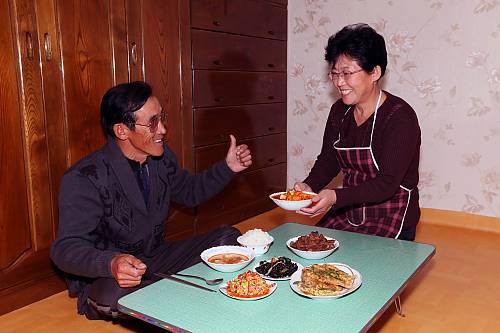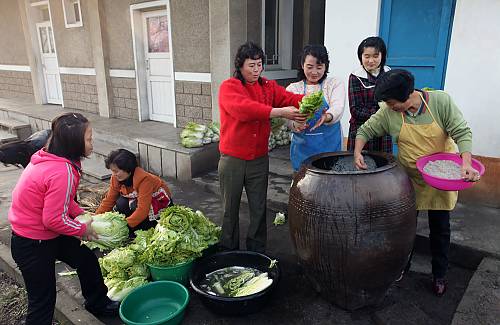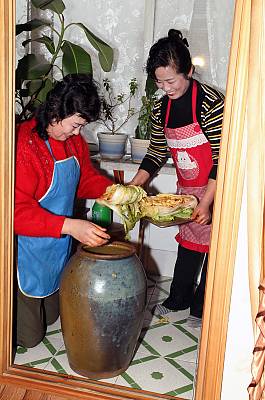Tradition of kimchi-making in the Democratic People's Republic of Korea
Democratic People’s Republic of Korea
Inscribed in 2015 (10.COM) on the Representative List of the Intangible Cultural Heritage of Humanity

Kimchi is a vegetable dish made by seasoning various vegetables or wild edible greens with spices, fruit, meat, fish or fermented seafood before they undergo lactic fermentation. The tradition of kimchi-making has hundreds of variants. It is served daily but also on special occasions such as weddings, holidays, birthday parties, memorial services and State banquets. Although differences in local climatic conditions and household preferences and customs result in variations in ingredients and recipes, kimchi-making is a common custom nationwide. Kimchi-making is mainly transmitted from mothers to daughters or mothers-in-law to daughters-in-law, or orally among housewives. Kimchi-related knowledge and skills are also transferred among neighbours, relatives or other members of the society who work collectively, sharing know-how and materials, to prepare large quantities of kimchi for the winter months. This activity, known as kimjang, boosts cooperation among families, villages and communities, contributing to social cohesion. Kimchi-making brings to the bearers a sense of joy and pride, as well as respect for the natural environment, encouraging them to lead their lives in harmony with nature.









